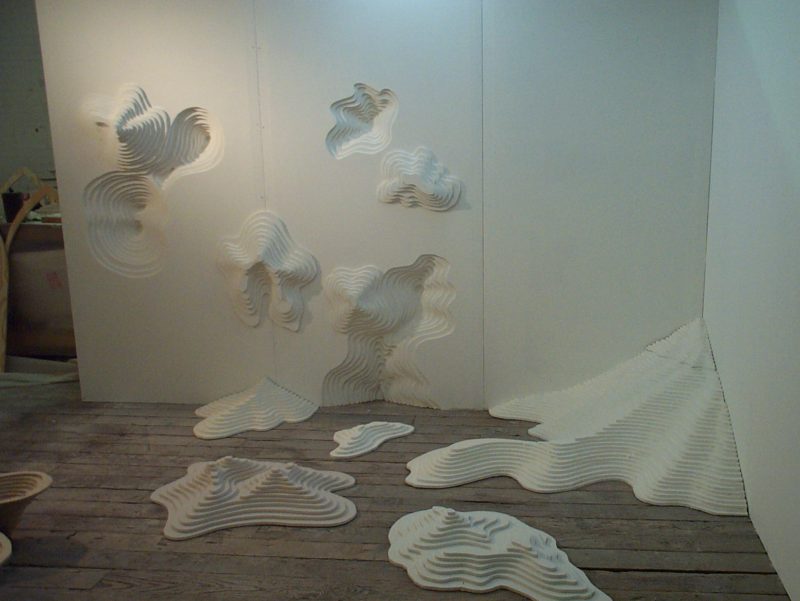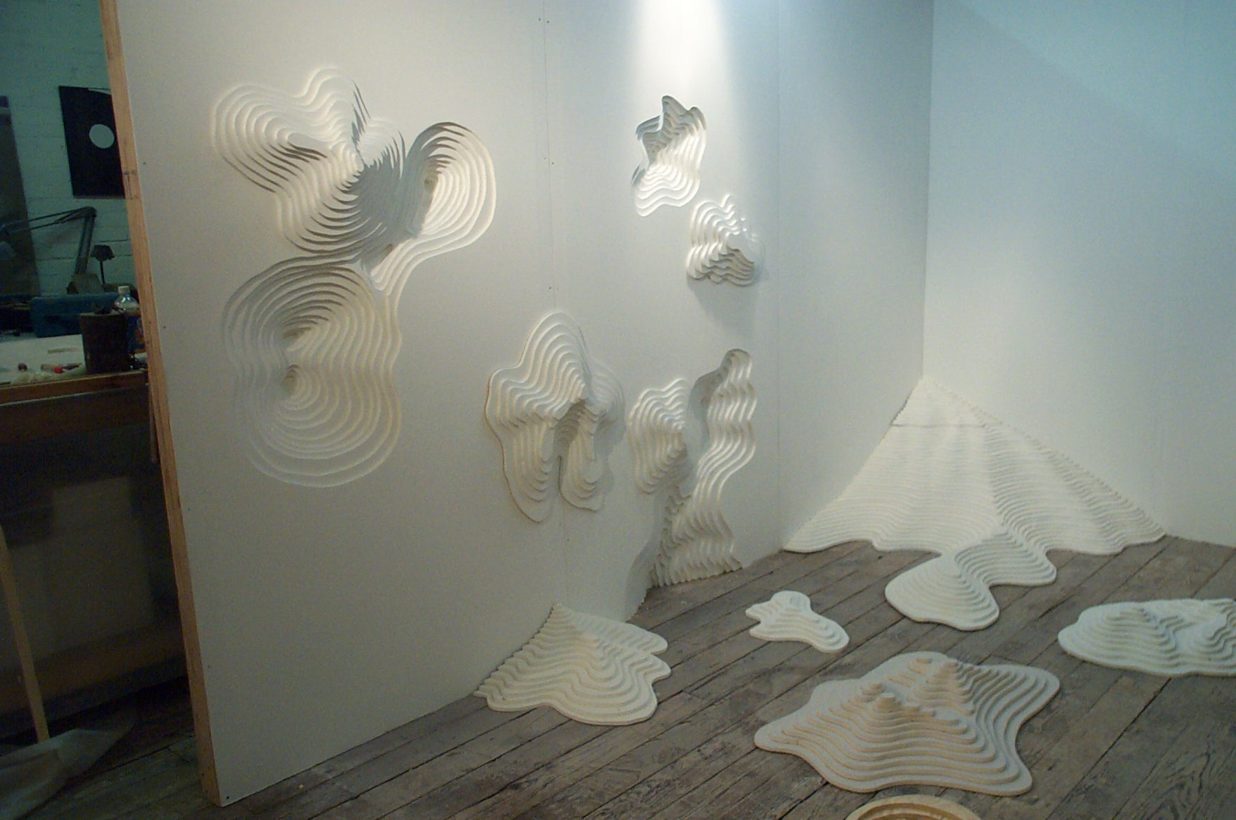Archive
Julia Ousley Homemaid
Artist Statement
“My work is a synthesis of my experiences in the modern and postmodern world:varied formal education, professional practices of health care and architecture, love of the human figure, and a fascination with the grid and urban life. I am most interested in exploring that place where the human condition and the built environment intersect. This installation thematically looks at the evolution of women’s lives in modern times.
Homemaid is constructed of drywall, in forms that move in and out of walls that are typical of most modern residential construction. The forms are symbolically feminine and attached to or flowing out of “home.” As attachment is lost, individual is lands stand alone in space. Turned over, they are vessels, womb-like and inescapably symbolic of the feminine, no matter whether traditionally a part of“home” or in the world detached. It is for me symbolic of the paradoxical dilemma modern women experience, torn between home and family and full participation in the world at large.
Technically, each panel is independent and many of the smaller parts can be either attached to a wall panel or gallery wall, or used on the floor as islands or vessels.The entire installation is designed to integrate into a gallery space in such a way as to look constructed into the sight. Yet it is not, and can be easily moved and transported, making it consistent with a sub-theme that runs through much of my work. It is KD (knock down) sculpture. Like KD furniture it travels flat and can be reassembled, a valuable asset for possessions in an urban environment of a mobile society.
The design of the pieces and the method of construction are derived from a technique commonly used to illustrate topography in architectural models. For me, this and the amorphous forms tie both the work and the theme to the earth and all of nature. The formal connection to architecture ties the work to my unique experience.
These observations are some of my thoughts about this work. However, I never know exactly where my ideas come from or how many layers of meaning have ended up in the piece. I always hope that the viewer will see something I have not, or at least recognize an element that I have not told them about.”

